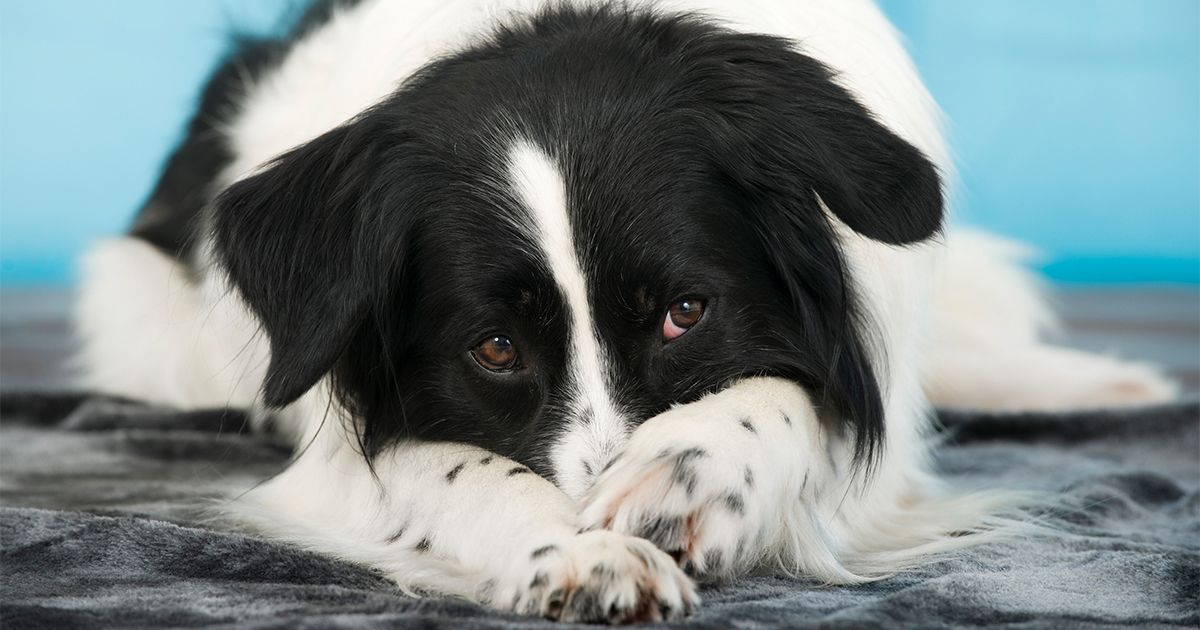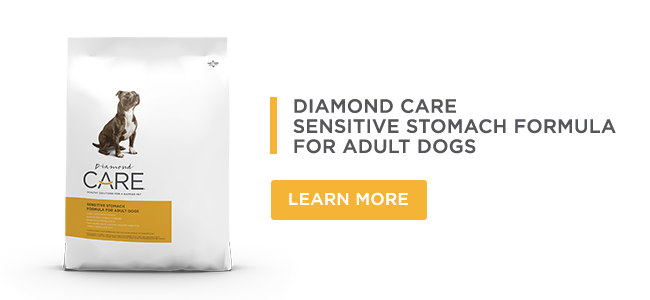An occasional “toot” is normal for dogs (and people). However, chronically gassy dogs who can clear a room with their stinky emissions are no fun to live with. Not only can too much foul-smelling dog flatus (i.e., gas expelled from the anus, aka farts) negatively affect the bond you have with your dog, but it could be a sign of a potentially serious problem.
WHY DO DOGS … DO THAT?
Dogs pass gas for a lot of the same reasons that we do. Swallowing air while eating is a major source of gas in the stomach. However, most of this air is belched out and very little passes into the intestines.
Normal digestion is the predominant source of gases in the intestines (more on that coming up). A third source of gastrointestinal (GI) tract gas is the movement of gases from the blood into the intestines. Intestinal gases need to go somewhere: some cross the intestinal lining back into the blood and some are expelled through the anus.
WHERE DOES THE GAS COME FROM?
The GI tract is populated with trillions of bacteria, fungi, viruses and other single-celled microbes that are collectively known as the intestinal microbiota. This microbial community has several functions, one of which is the digestion and fermentation of food components, especially those that can’t be digested in the small intestine.
When bacteria in the large intestine ferment fiber and complex carbohydrates from food, they produce gases, including hydrogen, methane, nitrogen and carbon dioxide. Again, some gas production is normal and nothing to worry about.
Excessive flatus, however, often results from dietary causes such as a sudden food switch, a diet that doesn’t agree with a dog’s digestive system, dietary indiscretion or a food made with low-quality ingredients. In these cases, large amounts of intestinal gases are likely to be produced. In cases where certain fibers or complex carbohydrates are present in food, dogs lack the digestive enzymes needed to split or break down these components into smaller, absorbable molecules. Instead the bacteria in the large intestine ferment these nutrients, producing large amounts of gas.
THE STINKY ONES
Five odorless gases — nitrogen, carbon dioxide, oxygen, hydrogen and methane — account for more than 99 percent of the gases passed as flatus. The remaining 1 percent is a mixture of sulfur-containing gases, like hydrogen sulfide, that cause flatus to smell like rotten eggs. Sulfur is an important mineral, and many sulfur-containing amino acids are essential to health. However, too much sulfur — from too much meat or protein in the diet — can be the cause of particularly stinky gas. Red meat, eggs, soybean meal, alfalfa meal, beans, peas and lentils are sulfur-rich ingredients used in dog foods.
GI-ASSOCIATED ILLNESS AND FLATULENCE
Dogs with sensitive stomachs or true food allergies tend to be prone to excessive gas, and stinky gas is a common symptom. But foul-smelling flatus can also signal a more serious underlying cause. Any GI disorder that leads to a decreased ability to digest and/or absorb nutrients in the small intestine can lead to increased gas production in the large intestine — and increased gas odors.
Other health issues that can be related to increased dog flatulence are:
- Inflammatory bowel disease
- Bacterial overgrowth in the small intestine
- Intestinal parasites
- Inflammation of the intestine (enteritis)
- Parvovirus infection
- Abnormal pancreas function (exocrine pancreatic insufficiency)
Most of these medical conditions cause symptoms in addition to excess gas such as diarrhea, weight loss, vomiting or changes in appetite. If your dog is gassier than usual along with other symptoms, schedule an appointment with your veterinarian.
WHAT YOU CAN DO TO REDUCE YOUR DOG’S GASSINESS
Whether you find dog farts funny or gross — or before you reach for the gas mask — you should know there are steps you can take to reduce your dog’s excessive and smelly gas. The goal is to make key changes to the diet that result in less gas being produced by bacterial fermentation of undigested food.
Consistently feeding a high-quality dog food is the best way to reduce your dog’s excessive tooting. One of the first steps is to choose a dog food that is highly digestible. Feeding a highly digestible food reduces the amount of undigested or partially digested nutrients available to intestinal bacteria for fermentation. Look for the words “highly digestible” or “low residue” on the pet food label, but be aware that they’re not always present.
Avoid foods that provide more protein than what your dog truly needs. Protein digestibility is still very important, however. Changing to a food with different protein sources may also benefit some dogs.
If you suspect your dog has a sensitive stomach, talk to your veterinarian about switching your dog’s food to a sensitive stomach formula such as Diamond CARE Sensitive Stomach Formula for Adult Dogs. Specialty diets such as those formulated for dogs with sensitive stomachs are designed to be easily digested and often contain only one or two sources of protein and carbohydrates.
Finally, get your dog moving! Research has shown that a sedentary lifestyle can contribute to flatulence in dogs and people. Walking your dog outdoors within 30 minutes of eating encourages your dog to have a bowel movement and helps eliminate intestinal gas.
RELATED POST: Things to Consider When Evaluating Dog Foods for Sensitive Stomachs








